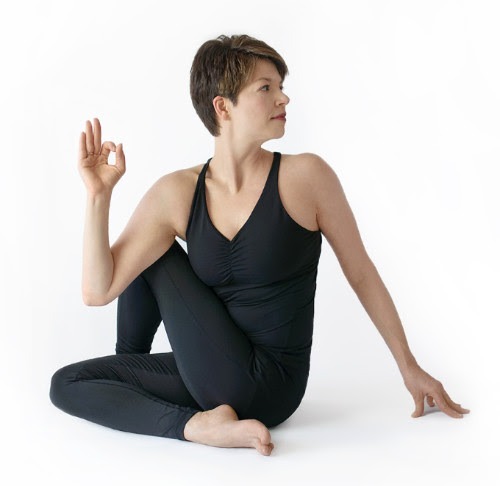
The physical aspect of yoga is the third step on the path to freedom, and if we’re being honest, the word asana doesn’t refer to the ability to perform a hand stand or an aesthetically impressive backbend, it means ‘seat’—specifically the seat you would take for the practice of meditation. The only alignment instruction Patanjali gives for Asana is “sthira sukham asanam”, the posture should be steady (sthira) and comfortable (sukha). Both qualities should be present to the same degree when practicing a posture. Without both of these qualities, there is no asana.
More important than the outer manifestations (e.g., how many asanas we have mastered or how many minutes we can stay in a headstand) is the way we feel the postures and the breath.
A yoga posture is mastered only when we have practiced a particular asana for a certain period of time and feel alert and unstressed as we practice it.
The idea is to be able to sit comfortably so we’re not ‘pulled’ by aches and pains of the body, or restlessness due to an uncomfortable position. Perhaps this is something to consider in your next yoga class if you always tend to choose the ‘advanced’ posture offered, rather than the one your body is able to attain: “In how many poses are we really comfortable and steady?”
A yoga practice invites you to start where you are. If we have a stiff back we have to acknowledge this fact. If we have arthritis in our knees, then we need to make modifications when the teacher asks us to take a deep knee bend position. We will not look like the person next to us or our teachers. Our bodies are unique and it is important to listen to our body and our breath for cues.
Most people begin a yoga practice with the expectation of achieving certain results. You might want to wish to strengthen your back, improve your balance, free yourself from pain, or simply feel more energetic. These particular goals are achieved by practicing the asanas in a variety of ways. When we practice a variety of yoga poses, we are becoming more attentive to our body. If we practice the same over and over again for a long time, they can easily become automatic and the repetition can cause more harm than good.
The proper practice of asanas requires our mind to be fully focused. We can vary our asana practice by varying the form, breath, rhythm, sequence, and attention to different parts of the body. The key to a good asana practice is to maintain the link between breath and body and keep Patanjalie’s yoga sutra in mind, “sthira sukham asanam.”

